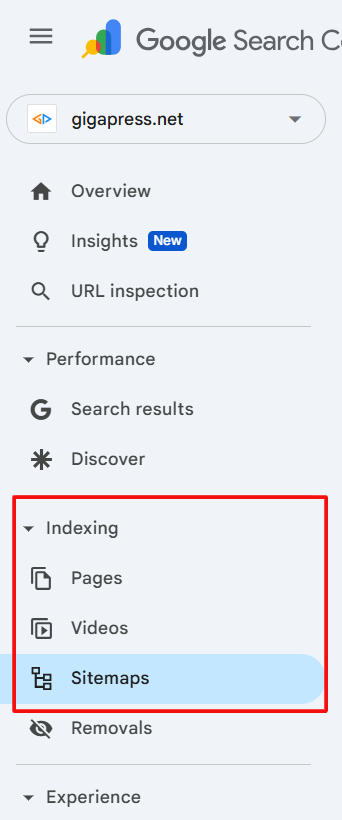Conversational queries SEO is becoming more important than ever, because voice search is no longer a futuristic idea—it’s the way millions of people search the web every day. Whether they’re asking Siri for “the best plugins for WordPress speed,” or telling Google Assistant to “show me how to optimize my blog postsA post is a type of content in WordPress, a popular open-source content management system used for creating an… More for voice search,” the internet is shifting toward questions spoken out loud, not typed into a box.
For WordPress creators, writers, and bloggers, this shift opens up a massive opportunity: optimizing your content for conversational queries—the natural, speech-like questions real people ask.
This guide walks you step-by-step through how to structure, write, and optimize WordPress content so it ranks well for spoken searches and AI-generated answers. Even if you’re new to SEO, these techniques are easy to apply and highly effective.
Why Conversational Queries Matter in Today’s Search Landscape
Voice search has experienced significant growth thanks to smartphones, smart speakers, and AI assistants integrated into cars, watches, and websites. The result? A new style of search where users speak in full, natural questions:
- “How do I set up a WordPress SEO pluginA plugin is a software component that adds specific features and functionality to your WordPress website. Esse… More?”
- “What’s the easiest way to make my blog mobile-friendly?”
- “How do I optimize my WordPress content for conversational queries?”
These spoken questions tend to be longer, more specific, and more personal than typed queries. This is exactly why conversational queries SEO matters. When you write in a style that matches how people speak, you increase your chances of appearing in voice search results, featured snippets, and AI-generated answer summaries.
For WordPress beginners, in particular, mastering conversational query optimization is one of the fastest ways to improve rankings and reader engagement.

What Are Conversational Queries? (And Why They Differ From Typed Searches)
Typed searches often look robotic:
- “voice search tips WordPress”
- “SEO WordPress plugin”
But spoken searches sound like real conversation:
- “What are the best ways to optimize my WordPress site for voice search?”
- “Which SEO plugin should beginners use on WordPress?”
Conversational queries reflect natural language patterns, including:
- longer sentences
- question words (Who, What, When, Where, Why, How)
- personal pronouns (I, my, you, your)
- context phrases (“near me,” “for beginners,” “step-by-step”)
Search engines—and now AI assistants—are built to interpret this human-like language.
If your content reflects how people talk, not just how they type, you dramatically increase your visibility.
How Voice Search Changes Your Keyword Strategy
Optimizing for conversational queries means shifting from short keywords to longer, more natural phrases. These are known as long-tail conversational keywords.
Here’s how voice search reshapes keyword research:
1. Focus on Question-Based Keywords
Users often begin spoken queries with:
- How do I…
- What is the best way to…
- Why should I…
- Where can I find…
Use tools like:
- AnswerThePublic
- AlsoAsked
- Google’s People Also Ask
These platforms reveal the exact questions users are speaking out loud.
2. Prioritize Intent Over Volume
Instead of chasing high-volume keywords, conversational queries SEO focuses on matching intent. For example:
High-volume typed keyword: “WordPress SEO plugin”
Conversational long-tail keyword: “What is the best WordPress SEO plugin for beginners?”
The second one aligns with how people actually talk.
3. Optimize for Featured Snippets
Voice assistants often pull answers straight from featured snippets. When your content is structured to provide clean, concise answers, your chances of ranking in voice search skyrocket.
How to Write WordPress Content for Conversational Queries (Step-by-Step)
This is where beginners often feel intimidated—but don’t worry. Writing for voice search isn’t complicated. It’s simply writing in a more natural, human way.
Let’s break it down.
1. Start With a Real Spoken Question
Every article, section, or paragraph should begin with a human-sounding question. For example:
Bad header: “Voice Search Optimization Tips”
Voice-friendly header: “How Do You Optimize Your WordPress Content for Voice Search?”
Why this works:
- It matches spoken language patterns
- It integrates long-tail keywords naturally
- It signals to search engines that your content answers a question
Tip: Use H2 and H3 headers as questions—this improves structure and increases your chance of being featured.
2. Write in a Natural, Conversation-Like Tone
When optimizing for conversational queries SEO, write as if you’re speaking to a beginner sitting next to you.
That means:
- Use simpler sentences
- Pause for clarity
- Use contractions (“you’re,” “it’s,” “they’re”)
- Explain technical terms in plain English
- Avoid jargon-heavy paragraphs
Here’s an example transformation:
Robotic SEO style: “To optimize WordPress content for voice search, implement structured data and long-tail keywords.”
Conversational SEO style: “If you want your WordPress content to show up in voice search, start by using long-tail keywords and simple structured data. Don’t worry—this is easier than it sounds.”
3. Structure Your Content for Quick Voice Assistant Delivery
AI assistants and smart speakers pull answers quickly. They prefer content that gives a fast, concise answer—followed by supporting details.
A good template:
1–2 sentence direct answer → deeper explanation
Example:
Direct answer: “Yes, you can optimize WordPress posts for voice search by using conversational keywords and answering common questions clearly.”
Expanded explanation: “This means writing the way people speak, structuring your article with question-based headers, and using tools like FAQ schema to help AI assistants understand your content.”
This “front-loaded clarity” is voice-search-friendly.
4. Optimize for Featured Snippets and AI Answers
Here are the snippet styles that voice search prefers:
Paragraph Snippet (45–60 words)
Ideal for definitions and quick answers.
List Snippet
Great for step-by-step tutorials or “best plugins” lists.
Table Snippet
Useful for comparisons, like plugin features.
FAQ Snippet
One of the best formats for ranking in People Also Ask and voice search queries.
If you’re writing for beginners, this structure makes your content both readable and SEO-optimized.
5. Add a Voice-Friendly FAQ Section

Frequently Asked Questions are pure gold for conversational queries SEO.
Examples of voice-optimized FAQs:
- “What is the easiest way to optimize my WordPress site for voice search?”
- “How do I choose conversational long-tail keywords?”
- “Do I need plugins to rank for voice search?”
These match real spoken questions and provide clear signals to search engines about your content.
WordPress-Specific Techniques for Voice Search Optimization
Now let’s get practical. Here’s how to apply all of this directly inside WordPress.
1. Best Plugins for Conversational Search Optimization
Beginners can use these plugins:
- Rank Math — built-in schema markup, question optimization
- Yoast SEO — beginner-friendly readability and FAQ blocks
- Schema Pro — adds FAQ, How-To, and Article schema
- WP Fastest Cache — boosts site speed (critical for voice search)
These help your content become more understandable to search engines and AI answer engines.
2. Using GutenbergGutenberg is the name of a modern WordPress editor that was introduced with the release of WordPress 5.0 in De… More Blocks for Voice-Friendly Formatting

The WordPress block editor (Gutenberg) makes conversational SEO easier:
- Use Heading blocks for question-style subheaders
- Use List blocks for clear, snippet-ready points
- Add FAQ blocks from Yoast or Rank Math for structured data
- Keep paragraphs short and scannable
This boosts readability and improves your chance of being featured.
3. Pay attention to Site Speed and Core Web Vitals
Voice search favors fast-loading sites. If your WordPress pagesIn WordPress, a page is a content type that is used to create non-dynamic pages on a website. Pages are typica… More load slowly, your chances of ranking drop significantly.
Beginner-friendly steps:

- Compress images with Smush or ShortPixel
- Use a lightweight themeA WordPress theme is a set of files that determine the design and layout of a website. It controls everything … More (like Astra or GeneratePress)
- Enable caching
- Use a CDN if possible
A mobile-friendly and fast site is essential, not optional.
Technical SEO That Supports Conversational Queries
Beyond writing and formatting, you’ll also want to strengthen the technical side of your WordPress site.
Key areas to focus on:
1. Add Schema Markup
Voice assistants rely on schema to understand pageIn WordPress, a page is a content type that is used to create non-dynamic pages on a website. Pages are typica… More structure. Use FAQPage, HowTo, and Article schema whenever relevant.
2. Improve Crawlability
A clean site structure helps Google access your content. Tips for beginners:
- Keep URLs simple
- Use internal linking
- Avoid unnecessary categoriesIn WordPress, categories are a fundamental taxonomy used to group and organize posts based on their topics or … More or tagsIn WordPress, tags are a taxonomy used to classify and organize posts. They are similar to categories, but unl… More
3. Submit XML Sitemaps via SEO Plugins
Plugins like Yoast or Rank Math handle this automatically.

4. Make sure your site uses HTTPS
Voice assistants don’t like insecure sites.
Examples: Transforming Traditional Headlines Into Conversational Voice Queries
Here are a few real examples to help you understand how to rewrite your content.
Before:
“WordPress SEO Tips”
After (voice-friendly):
“What Are the Best SEO Tips for WordPress Beginners?”
Before:
“Optimize blog loading speed”
After:
“How Do You Improve Loading Speed on a WordPress Blog?”
Before:
“Install WordPress plugins”
After:
“What’s the Easiest Way to Install Plugins on WordPress?”
These simple changes dramatically improve conversational query rankings.
How to Track Conversational Query Performance
After optimizing your content, you need to track results. Beginners can monitor conversational SEO growth using:
1. Google Search Console
Look for:
- queries starting with “how,” “what,” “why,”
- longer question-style phrases
- impressions on long-tail keywords
- People Also Ask expansion

2. Analytics Tools (e.g., GA4)
Check:
- page engagement
- scroll depth
- time-on-page
If users stay longer, it often means your conversational tone is working.
Voice search is rapidly becoming the new norm, and WordPress creators who adapt early will gain a strong advantage. By writing in a natural tone, structuring your content around real questions, and using tools that support schema and readability, you can easily optimize your website for conversational queries.
Whether you’re a beginner just starting your blog or an experienced writer updating old posts, these strategies will help you rank higher, connect with users more naturally, and stay ahead of the evolving SEO landscape.
If you want your WordPress site to succeed in 2025 and beyond, remember this simple rule:
Write for humans first, search engines second—and voice assistants will follow.
If you’re looking for fast WordPress hosting as well as done-for-you updates, check out our hosting packages by clicking the button below:




![How to Undo in WordPress Elementor [A Step-By-Step Guide]](https://codingheros.com/wp-content/uploads/2024/12/how-to-undo-in-wordpress-elementor-a-step-by-step-guide-768x457.png)
